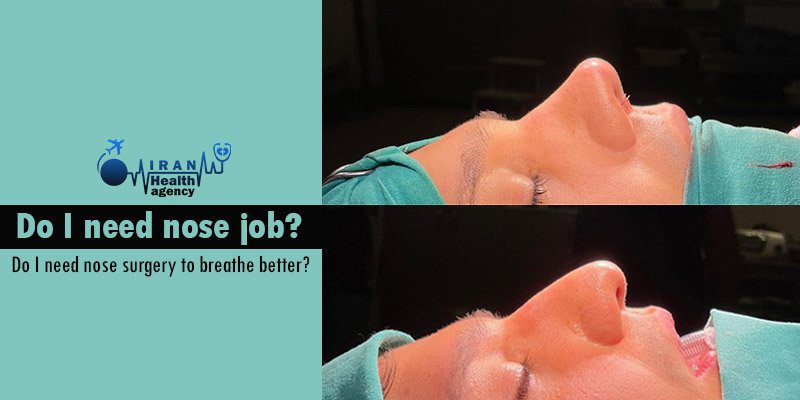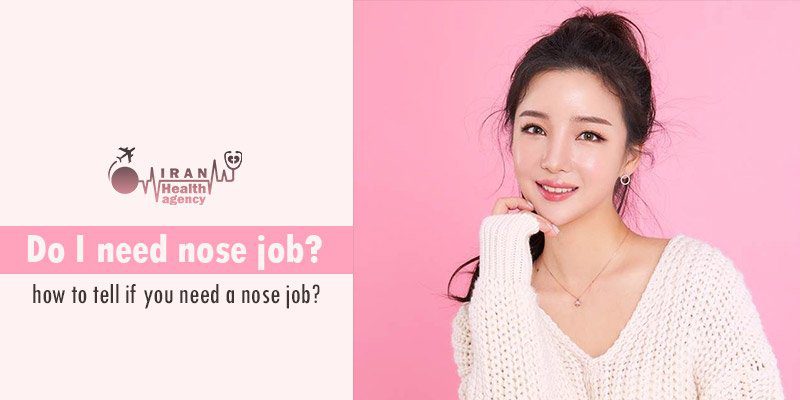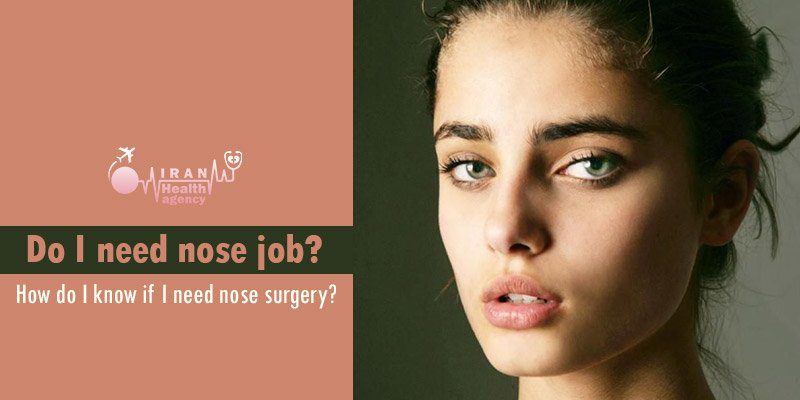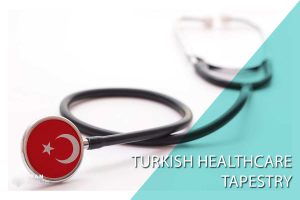do I need nose job? Nose jobs can have a dramatic effect on your face’s appearance. It is imperative to understand the possible risks and complications before deciding. It is also imperative to consult with a qualified plastic surgeon to discuss the potential benefits and drawbacks of the procedure.
What nose would be best suited to my face? If you are looking for an answer to this question, please What nose would look best on my face? article.
An overview of factors to consider before undergoing rhinoplasty
There are certain factors to consider before choosing rhinoplasty or a nose job.
- Understand your motivations.Make sure you’re doing it for yourself, not others. Getting a nose job because you think it will make you more attractive or liked is usually not a good motive.
- Consider both pros and cons.A nose job can improve appearance and confidence. But it also has risks like complications from surgery, extended recovery time, and an unnatural or “done” look.
- Set realistic expectations. No surgery can guarantee perfection. Be clear on what you want to change and the improvements you hope to see. Discuss this thoroughly with your surgeon.
- Find an experienced, board-certified plastic surgeon.Please do your research to verify credentials, see before/after photos of their work, and read reviews. A less qualified surgeon increases risk.
- Know it may take time to see the final results.There can be swelling for weeks or months before you see the full effects. Be patient through the recovery process.
- Prepare for the costs and recovery time.Rhinoplasty is expensive, averaging $5,000-$10,000 in the U.S. You’ll also need to take time off work and limit activities during recovery.
- Consider non-surgical nose options first.Dermal fillers or liquid rhinoplasty can subtly shape the nose without surgery. See if these less invasive approaches can give you the improvements you want.
The decision to get a nose job is very personal. Consider whether it’s the right choice for you medically and emotionally.
How to know if you need a nose job?
Have you ever felt unhappy with a particular feature of your face? Perhaps it’s your nose that’s bothering you. It’s natural to feel this way, but did you know that changing the appearance of your nose can boost your confidence and self-esteem? Ultimately, what matters most is how you feel about yourself, not what others think or perceive. So if you’re considering a change, know it’s a personal decision that can positively impact your life.
Are you concerned that your nose may be out of proportion with your face? This can be a factor to consider when deciding if a nose job suits you.
Study more : how long after rhinoplasty can i laugh?
Many individuals undergo nose jobs with the primary goal of achieving facial harmony. They feel that their noses are throwing off the balance of their facial features. It’s widely understood that all features need to be well-proportioned for a person’s face to be naturally attractive.
Here are some signs you could benefit from rhinoplasty or nose jobs:
- You are deeply dissatisfied with the appearance of your noseThis could be the shape, size, crookedness, bumps, wide or flared nostrils, etc. If your nose makes you self-conscious, surgery may help.
- You have a nasal obstructionIssues like deviated septum or turbinates can cause difficulty breathing. If it persists despite other treatments, rhinoplasty could open your nasal passages.
- Your nose is noticeably asymmetricSignificant asymmetry between your nose’s left and right sides can make it look unbalanced. Rhinoplasty can make it more symmetric.
- Your nose doesn’t match your faceIf your nose seems disproportionate to your face, like too small or over projected, cosmetic changes may create better harmony.
- You’ve experienced nasal traumaInjuries can damage internal nasal structures, causing aesthetic and breathing problems that rhinoplasty can fix.
- You have a dorsal humpLarge bumps on the nose bridge often worsen with age. Shaving it down can create a smoother, more refined profile.
- Your tip droops significantly
Overprojection and drooping are common issues rhinoplasty addresses.
- You dislike your profile viewRefining the shape and projection of the nose can significantly improve its profile.
If you’re considering a rhinoplasty, consult with a board-certified plastic surgeon. They can assess if it’s likely to achieve the improvements you want. Be sure you’re doing it for yourself, not for others.

People eligible for rhinoplasty
- Dissatisfaction with the appearance or shape of their nose that cannot be improved with non-surgical methods. This could include a crooked or hooked nose, large bump, wide or flared nostrils, etc.
- Nasal obstruction or breathing difficulties that aren’t resolved through other treatments. Rhinoplasty can open nasal passages.
- Overall good physical health without conditions that impair healing like diabetes or autoimmune disorders.
- Realistic expectations about outcomes. Rhinoplasty can only modify the nose, not achieve perfection.
- Non-smokers. Smoking impairs circulation needed for post-surgery healing.
- Physically mature enough for the procedure. Rhinoplasty should wait until facial growth is complete, typically age 14-15 for girls and 15-16 for boys.
- No active acne. Acne causes inflammation that can complicate healing.
- No history of severe nasal trauma. Injuries can damage cartilage and inhibit outcomes.
- No previous surgeries, like a facelift that altered nasal anatomy. This can limit revision options.
- Emotionally ready for a lengthy recovery. Rhinoplasty involves weeks of swelling, bruising and nasal care.
What type of nose job do I need?
Several types of nose jobs or rhinoplasty procedures can address different cosmetic and functional goals:
1. Reduction of rhinoplasty
This reduces the overall size and width of the nose. It can narrow wide or flared nostrils, shrink larger tips and bridge humps.
2. Augmentation rhinoplasty
This builds up and reshapes underdeveloped or asymmetrical areas using cartilage grafts. It can raise the bridge, define the tip, or widen narrowed nostrils.
3. Tip plasty
This focuses on refining just the nasal tip. Changes could include adjusting tip projection, rotation, or definition.
4. Hump removal
This shaves down a dorsal hump or bump to smooth the bridge for a straighter profile.
5. Septoplasty
This straightens a deviated septum to improve breathing but doesn’t change external appearance.
6. Revision rhinoplasty
A secondary procedure is done to correct issues from previous surgery, like breathing problems, asymmetry, or undesirable shapes.
The type you need depends on your unique goals and the specific areas you want to change. An experienced plastic surgeon can evaluate your nose and recommend the techniques likely to give the best outcomes. Computer imaging helps visualize potential results.
rhinoplasty for breathing
Do I need nose surgery to breathe better? Does nose surgery improve breathing? These are the questions that people may have when considering rhinoplasty.
Surgery may be the next option if you have difficulty breathing through your nose and traditional medical treatments like nasal sprays or sleep apnea treatments aren’t working.
Nasal obstruction can cause problems with exercise, sleep, snoring, and other activities. If the septum is deviated, a septoplasty can usually fix the problem.
However, in cases where the deviation is severe or near critical areas of the nose, surgery may be necessary to fix the problem and improve breathing.
This type of surgery is called rhinoplasty, and it strengthens key breathing areas of the nose with strategically placed cartilage grafts. Enlarged turbinates can also be a chronic problem with a deviated septum, and rhinoplasty can help normalize their size and improve breathing.

Would you like to explore the most significant aspect of rhinoplasty for enhancing your breathing?
Can a nose job fix mouth breathing?
A nose job or rhinoplasty procedure generally cannot directly fix mouth breathing. However, it can be helpful in some cases if the mouth breathing is occurring due to underlying nasal obstruction or structural issues that rhinoplasty may be able to improve.
Some potential ways a nose job can indirectly help with mouth breathing:
- Straightening a deviated septum – This corrects the crooked septum between nostrils that may be partly blocking airflow.
- Reducing enlarged turbinates – Overly large turbinates can block nasal passages and drive mouth breathing. Some reduction can open airflow.
- Refining nasal valves – Narrowing the nasal valves can restrict airflow. Grafts or precise sutures may widen this area.
- Improving external nasal geometry – Reshaping pinched nostrils, narrow bridges, or poorly defined tips can open nasal airways.
However, mouth breathing can also be caused by non-structural factors like allergies or enlarged tonsils/adenoids. If that is the case, cosmetic rhinoplasty may not improve mouth breathing. Identifying the root cause through an ENT specialist’s examination before considering surgery is essential.
While a well-executed rhinoplasty can sometimes help alleviate mouth breathing, it may need to be combined with other treatments to address the issue in many patients fully. Close communication with your surgeon is critical.
Related post: Do I get beautiful face after rhinoplasty?
Septoplasty
how can you fix septoplasty?
Septoplasty in iran is a surgical procedure to fix a deviated septum and improve breathing.
Here’s an overview of how it works:
- The surgery is done through incisions inside the nostrils, allowing access to the septum (the wall between the nostrils).
- The deviated portions of the septum are precisely repositioned and straightened.
- If portions of the septum are overly large or misshapen, they may be surgically trimmed or reshaped.
- Any septal perforations (holes) are repaired using cartilage grafts.
- Splints are placed inside the nostrils to support and stabilize the newly straightened septum as it heals.
- Dissolvable nasal packing may be inserted to limit postoperative bleeding and swelling.
- Outside splints may also be placed to immobilize the septum while it sets in proper alignment.
The surgery typically takes 1-2 hours under general anesthesia as an outpatient procedure.
Recovery time is around 1-2 weeks as swelling subsides and the splints are removed. Pain and congestion are expected during the initial recovery period.
When performed by an experienced ENT surgeon, septoplasty is highly effective at realigning the nasal septum, improving breathing, and resolving symptoms like chronic congestion and sinus infections. Results are long-lasting in most patients.

Surgery can enhance facial features, but there’s no such thing as a perfect nose. Pay attention to expectations and focus on harmony with your other features. Surgeons should aim for natural-looking results rather than a so-called “perfection” that doesn’t exist. Also, remember that you can’t ask for someone else’s nose as it won’t suit your face. Your surgeon’s goal should be to ensure your nose fits your face.
FAQ
Would I look better with a nose job?
How long can a nose job last?
Why do nose jobs look unnatural?
Will I be happier with a nose job?
How can I determine whether I have become more beautiful after the operation?
How to tell if you need a nose job?
iran health agency is one of the best centers in the field of medical and beauty tourism where you can solve your problems by receiving advice.




